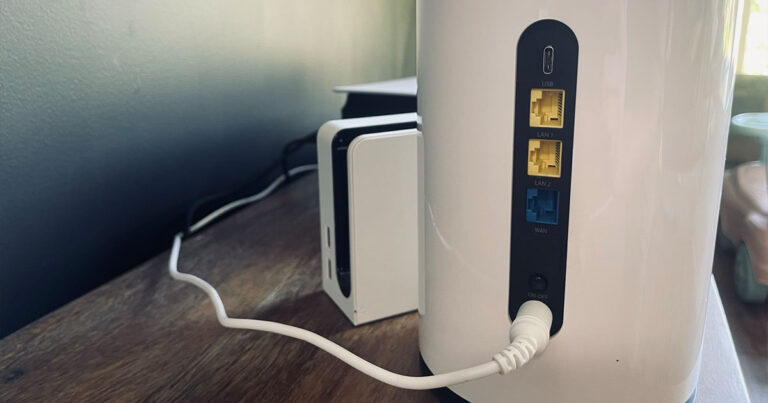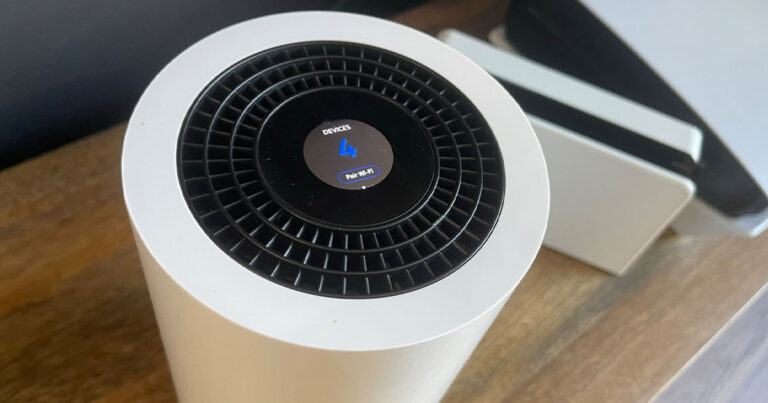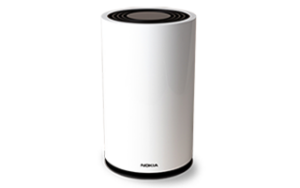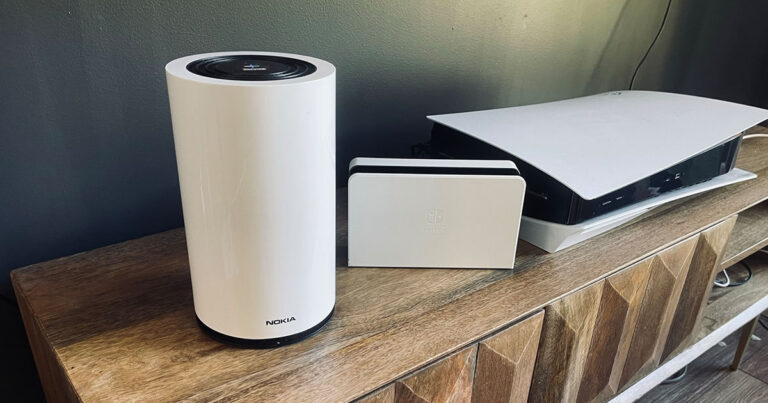After 12 months of tech support and switching providers, Optus 5G Home solved my broadband troubles in a matter of hours.
Optus 5G Home review: How 5G saved me from an NBN nightmare
My broadband woes date way back to the early days of the National Broadband Network (NBN) rollout.
It all started back in 2014 or so when I was still a cash-strapped university student with a need for (decent) broadband speed. Optus had parked a branded small SUV in my street decorated with the claim ‘NBN now available in your area’ or something to that effect. Queue my disappointment when I found out that, while NBN was indeed available in my area, my apartment building (and the surrounding businesses) had missed the boat with no real reason why or when we might be eligible. Between then and now, I’ve lived in four different apartments and one house, each with its own fun NBN issues to troubleshoot.
With the NBN situation going nowhere fast and mobile speeds (and data allowances) improving, I often ended up paying through the nose for a solid mobile plan that could support my work and extracurricular activities.
In the past, I’d been severely let down by 4G Home Wireless options. So much so that the idea of 5G Home didn’t fill me with much confidence. But as 5G coverage expanded in Australia, and my FTTN NBN continued to average about 3 to 5Mbps (with bonus hourly dropouts), I decided to give 5G Home a shot. Now that I have, I won’t be looking back.
Optus 5G Home price and plans
The day I decided to try Optus 5G Home Internet, the one thing stopping me from diving in headfirst was the monthly price.
There are two plans available: $79 will get you unlimited data capped at 100Mbps while $89 per month gets you uncapped speeds (210Mbps typical evening speeds), unlimited downloads and a bonus Fetch TV Mighty. That might not seem a lot but at the time I was only paying $69 per month for my NBN plan. Granted, I wasn’t getting much use out of it but it was still a good deal cheaper.
In the end, I opted for the $89 uncapped speed option for a few reasons: a) the plans are all month-to-month and you can cancel at any time and b) Optus offers a 50Mbps speed guarantee on its 5G Home Internet plans (more on that later). So all in all, it felt like a low-risk investment.
I also reminded myself that if Optus 5G speeds were as fast as they claimed, the $79 plan would be equivalent to a Fast NBN 100 plan while the $89 plan would be closer to a Superfast NBN 250 plan.
Not including promotional pricing, the cheapest NBN 100 plan is currently $79 per month through MyRepublic and the cheapest NBN 250 plan is $99 per month from the same provider.
So in contrast to the cost of primo NBN, the 5G Home plans began to feel more reasonably priced.
Here are a few popular NBN 100 plans for the sake of comparison:
Fast (and reliable) speeds over 50Mbps
Roughly a year-and-a-half ago, my troubled NBN journey hit the absolute pits when I moved into a house with an FTTN (Fibre-to-the-node) connection that was “as far from the exchange as you could be,” according to the visiting NBN technician. I was told that the absolute maximum download speed I’d ever get at my house would be roughly 30Mbps. Far from great but I could live with a stable 30Mbps. The reality was anything but.
Over 12 months, I would estimate that my NBN speeds average somewhere between 3 and 5Mbps (based on a lot of speed-testing during work hours) with the occasional spike to 20 to 25Mbps. But the worst part was the dropouts. On an almost hourly basis, my connection would completely go dark for up to 5 minutes at a time. During my last visit from an otherwise very helpful NBN technician, I was told that dropouts were just a sad reality of connecting to the NBN; but I could tell by the tired, glazed-over look in their eyes that they weren’t quite grasping the severity of the issue.
That was the final straw for my long and painful relationship with the NBN. By that afternoon, I had acquired and set up the Nokia FastMile modem that Optus offers with its 5G Home Internet plans and ever since I’ve had a stable and reliable internet connection at home.
Optus 5G Home Internet speed tests
To call Optus 5G Home Internet speeds stable might be a bit generous. Truthfully, my speed-testing has yielded inconsistent results. Inconsistent as they may be, Optus 5G Home Internet speeds have yet to deliver anything as miserable as my FTTN connection did. I also haven’t had any noticeable dropouts.
During the day, Optus 5G Home Internet consistently delivers between 70 and 150Mbps download speeds and between 11 and 17Mbps upload speeds.
Here’s a rundown of my latest 5G Home speed tests:
As you can see from the table above, my Optus 5G Home Internet connection doesn’t always manage to break the 50Mbps benchmark that the plan guarantees. For me, that’s not much of an issue but if you are disappointed by your results, Optus offers a 50Mbps speed guarantee.
Optus 5G speed guarantee
5G weak spot: Latency and ping
In my experience, download and upload speeds won’t be a noticeable issue for most Australians. Latency and ping are a different story. In my tests, Optus 5G Home ping has wavered between 20 and 60ms. That’s… not great. For online gaming, even 20ms is getting hairy for an online skirmish in Call of Duty: Warzone or Apex Legends.
What excites me most about 5G, personally, is the potential for services like Xbox Cloud Streaming. However, with Optus 5G Home’s sketchy latency, my experience with the above has been inconsistent.
Don’t get me wrong, the fact that I can play a triple-A game like Halo: Infinite from my iPhone is mind-blowing in of itself, but it involves wrestling with Optus 5G’s sporadic latency, leading to delayed reaction times and a lot of missed shots. At least I’ve got something other than my poor marksmanship to blame.

Optus 5G Home bundles and perks
Outside of the 5G itself, Optus 5G Home Internet also offers some of the perks and bundles you would normally associate with a fixed-line internet service.
Football fans will get access to Optus Sport’s premium tier (though that’s true of most Optus plans these days) and those interested in Fetch TV can bundle a Fetch Mighty 4K PVR box with the $89 uncapped plan at no extra cost. In addition to the subsidised hardware cost (usually $349 outright), Optus chucks in one month of the Ultimate Channel Pack (typically $20 per month) and 1 Premium Channel Pack (usually $6 per month) of your choosing, ongoing.
I’ll be honest, with such a wide range of streaming devices available at our fingertips these days, a Fetch box feels a little unnecessary. But there are still people out there with a need for PVR (personal video recording) and there aren’t many options left in Australia that cater to them. This is one of them.
Still, it is kind of annoying that you can’t refuse the Fetch box on the $89 plan because if you’re like me, you inevitably end up lumped with a streaming box you’re never going to use. It just seems so wasteful.
Modem setup and placement
Being free of the NBN comes with its perks and drawbacks. Without the need to plug your modem into a designated NBN connection socket, you're technically free to place the Optus 5G modem anywhere in your house or apartment. But because the Nokia FastMile 5G Gateway relies on the 5G/4G Optus mobile network, it is subject to the same whims of any other mobile internet device.
There are a lot of factors that can impact your speeds, such as 5G coverage and geography. Even thick walls are enough to slow the 5G modem's roll.
Optus recommends placing your modem near a window, pointed towards your closest 5G tower. Thankfully, the Nokia FastMile 5G Gateway has a helpful little digital display that guides you towards the ideal placement (think of it as a digital compass for 5G reception).
That said, mobile coverage can be a precious thing. I've seen the Optus 5G Home modem fall back to 4G on several occasions when it was previously receiving 5G coverage in the same spot. Mercifully, the fallback to 4G has never stooped so low that it's been noticeable. But I'd still love to be getting consistent 5G coverage with a 5G modem.

Conclusion: Is Optus 5G Home worth trying?
In my experience, with my very particular set of circumstances in mind, Optus 5G Home Internet has been worth every cent. If the speeds and latency I’ve rattled off above don’t sound all that impressive to you, then you’re probably on a much faster and more reliable FTTP (Fibre-to-the-Premises) or HFC (Hybrid-Fibre Coaxial) connection.
Even though its speeds have dipped below the 50Mbps minimum, it’s never lasted long enough to notice. After years of telcos and NBN Co passing the buck back and forth, I finally have a reliable home internet solution that has made everything just a little bit easier. I can enter Zoom meetings without warning everyone of my inevitable vanishing act. I can download games and play them that evening. I can even play them online. Blimey, I could even set up a smart home if I wanted.
So this is the internet everyone’s been talking about for the last 10 years or so, huh? Colour me impressed.
Related Articles







